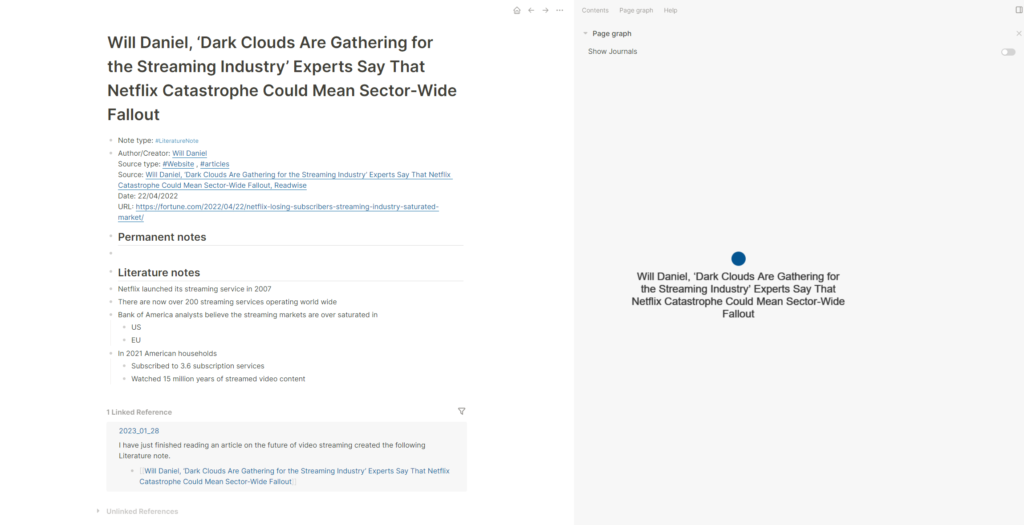In this guide to creating a Zettelkasten in Logseq, we will cover the basics of creating a Zettelkasten personal knowledge management system in Logseq. In this guide, we will consider the underlying structure of the Zettelkasten. Before moving on to the process of creating literature notes and permanent notes.
Creating a Literature note
As Logseq doesn’t allow you to split your notes with folders, we need to differentiate our literature and permanent notes in another way. For me, the alternative is to use tags which Logseq does support.
I will link to the original article from which I made this literature note.
To create the actual note, you have two choices: link to the literature note from the daily journal or create a new page. The benefit of creating a link from the daily journal is that you will have a record of all the literature notes you created on that date.

I’m going to admit that to speed up the process of creating this guide; I copied my literature note from my personal Zettelkasten in Obsidian. But the principle is the same whatever application you use. You can find out more about literature notes in our introductory guide to Zettelkasten.
Adding a permanent note
Now that I have written my literature note. I can start creating some permanent notes from the literature note I have just completed. Before I start, I want to remind you that each permanent note should be atomic and cover one fact, idea, entity, or thought.
I start the process by reading my summary and looking for anything I want to create a permanent note for or think I need to create a permanent note about. From this literature note.
I create a link to the new permanent note by starting to type in the title I had decided to give the note, as it allows me to see if I have already created a permanent note on that entity. It could also highlight similar notes that I might want to link to. If no link is found, go ahead and create a new page.
The first permanent note I created from the literature note selected for my example was Netflix. I thought it was an interesting and potentially useful fact that Netflix launched its streaming service in 2007.
The second permanent note I created relates to the Bank of America analysis stating that the streaming market was already oversaturated in the US and the EU. That raises the question of how you phrase the note title, and for me, it was a part of an answer to the question is the streaming market over saturated?

The last permanent note I took was 2021 American streaming stats, as it is yet again factual information on the state of video streaming in the US in 2021. I especially liked the point that Americans between them had watched another streamed video content to last one person 15 million years.
Unfortunately, this example taken from my current literature notes didn’t make me come up with my own thoughts. In many cases, that does happen when adding permanent notes to your Zettelkasten. There are times when it does, which is why I recommend reading the section on taking permanent notes in our guide to creating a Zettelkasten in Obsidian, as when I made my permanent notes for that guide, I added some permanent notes based on my thoughts.
The key point is that when you create a permanent note from your ideas, you don’t need to link them from a literature note as it is your idea created by your mind.
When I laid out this guide, I thought I would tag my permanent notes in the guide, but I decided against it as I was writing it.
Conclusion
In this guide, we looked at how you could use the Logseq note-taking application to get your Zettelkasten started.
May I recommend reading our review of Tiago Forte’s second brain?
